North Korea. Part IV. Roads and TransportationMapApril 28 — May 6, Juche year 95 (2006) The aboveground subway station entrances look completely mundane.  The turnstiles inside go up to just above the knee (Koreans—unlike, say, the Chinese—are all fairly short). The inscription above the escalator reads: “Long Live General Kim Jong-il, the Sun of the 21st Century!” 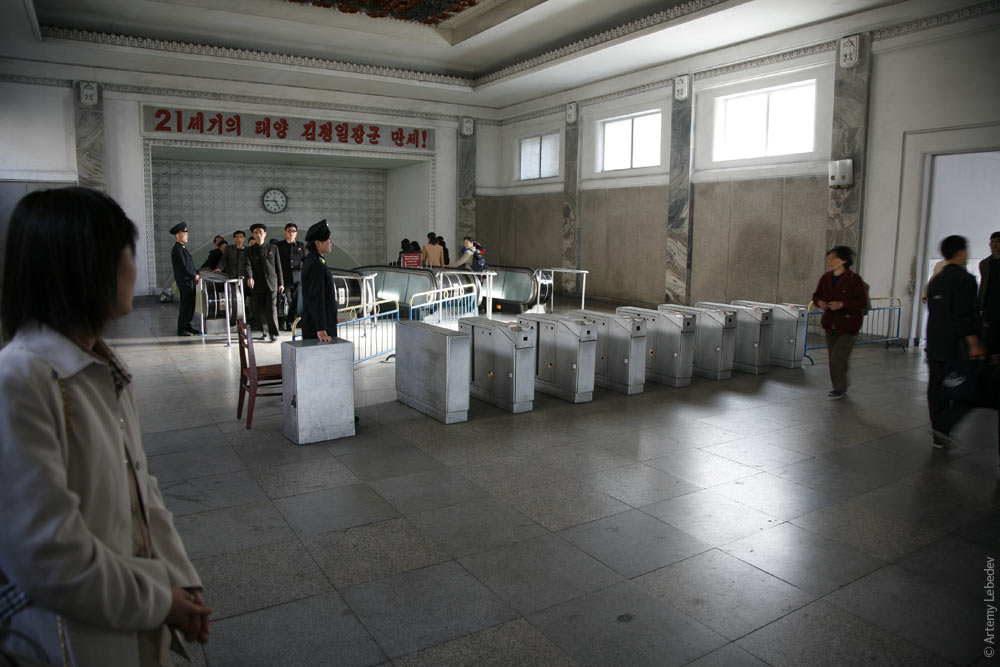 The escalators are very long and have rather original lighting. 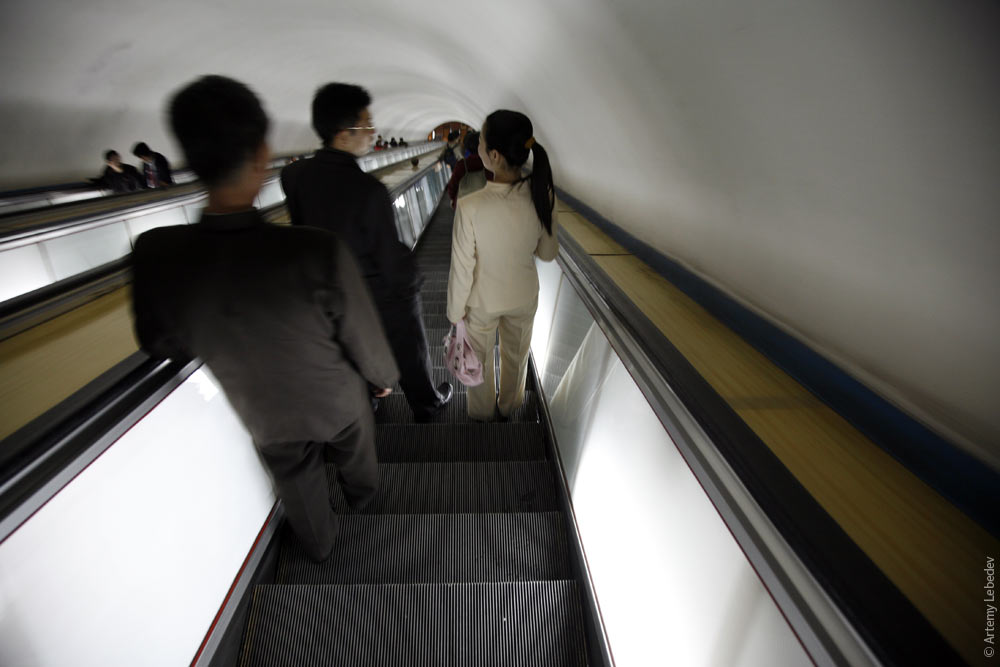 People read newspapers on the platform. 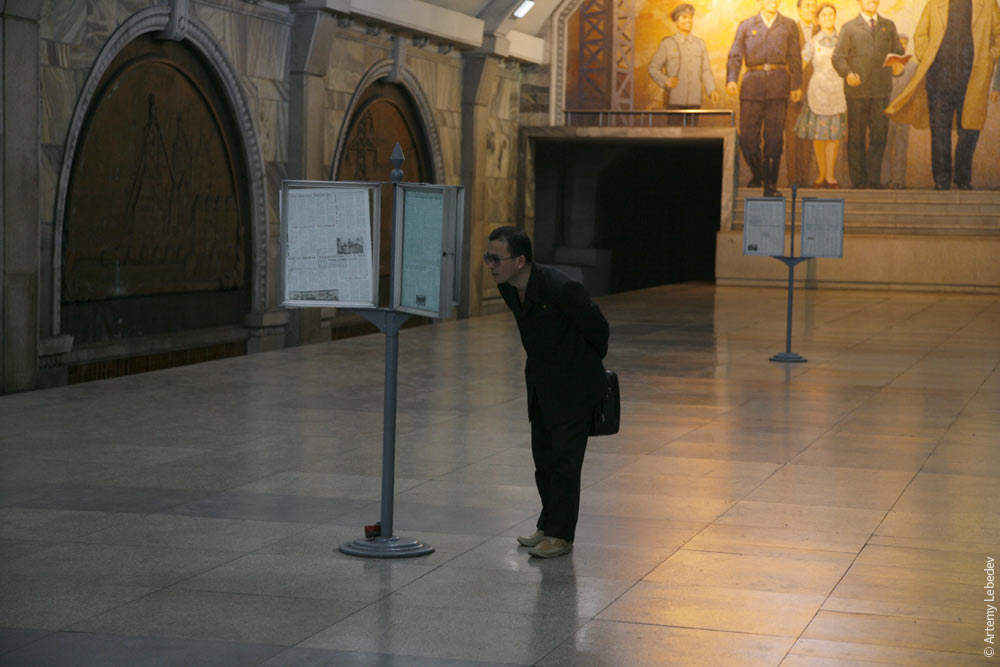 Subway trains have four cars each. The doors are opened manually and close automatically. 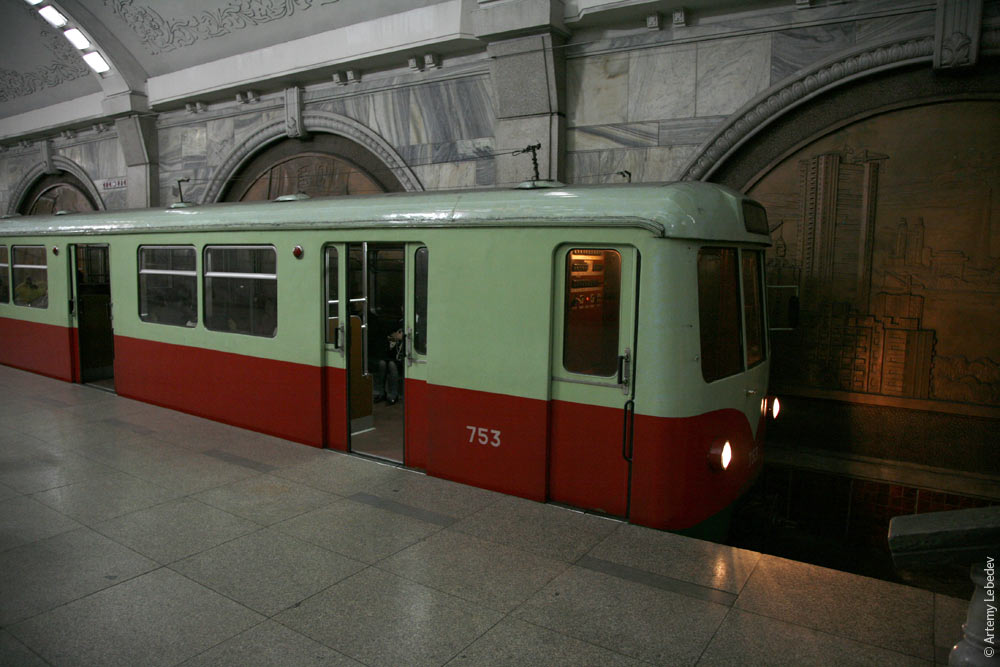 The stations’ architects were set with the task of one-upping the classic stations of the Moscow Metro. The station halls here have ceilings that are twice as tall as ours, and so far we haven’t pulled off any mosaics spanning the entire track wall, either. 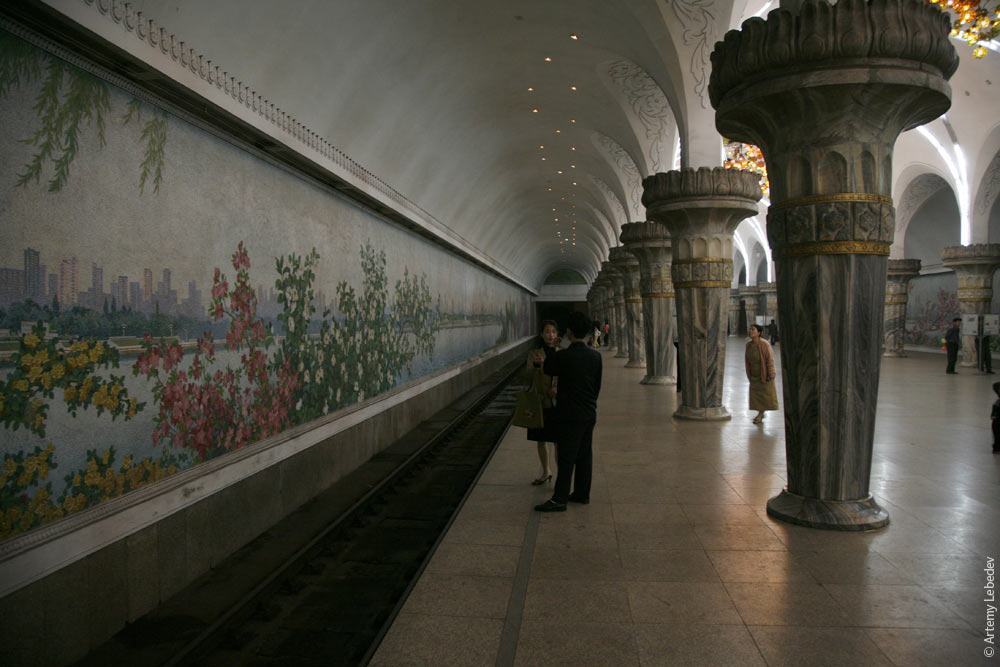 There’s a monorail at one of the amusement parks.  The cities are notable for a near-total absence of cars. Everyone walks (“walking 30-40 minutes a day is very good for you”) and occasionally rides the overcrowded public transport, which includes trams, trolleys, and even double-decker buses. Bicycles are a luxury here and seen fairly infrequently. In any case, bikes are definitely issued to the secret police patrolling the streets (see Part I). 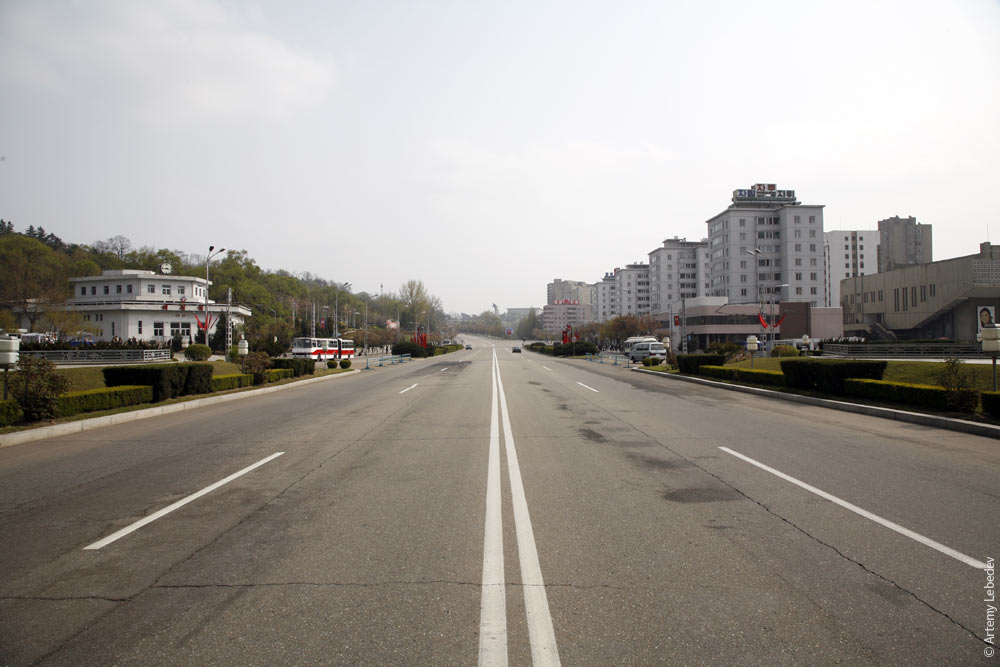 Pyongyang has a lot of underground walkways, everyone errs on the side of caution—you can get fined for jaywalking. Even though the streets generally look like this: 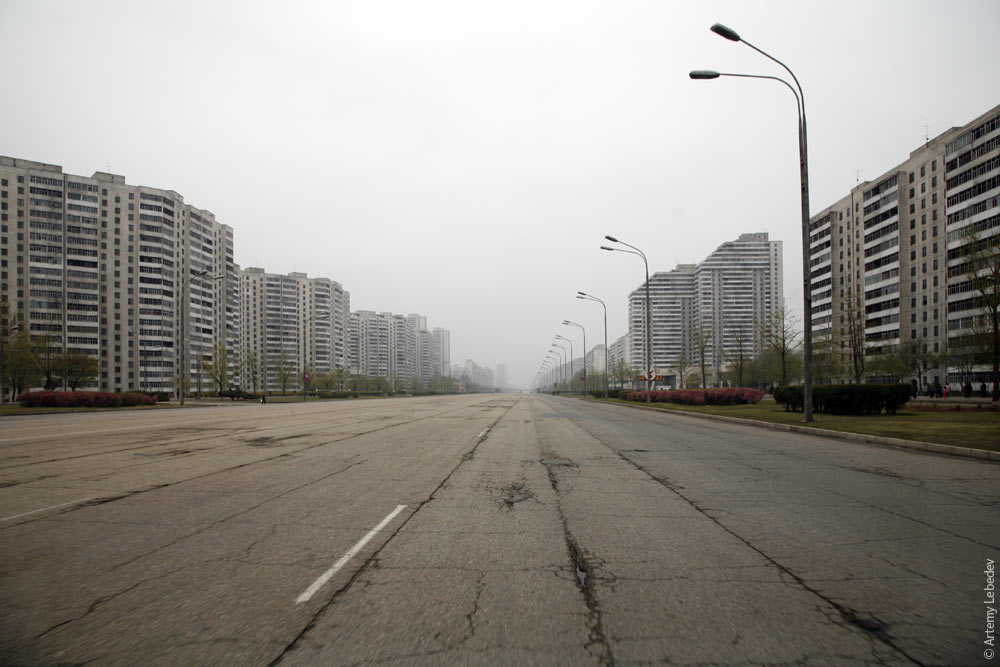 Zebra crossings have an original design: two stripes, a gap, two more stripes, a smaller gap, three stripes in the middle of the road, then a symmetric repetition. 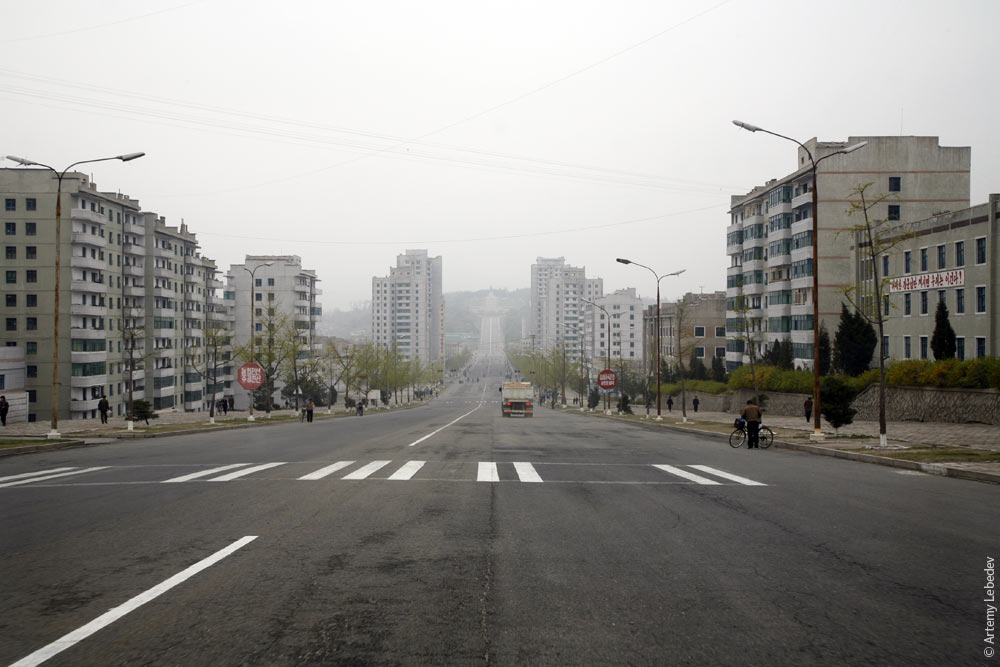 A booth for a traffic controller. Or some other kind of road supervisor. 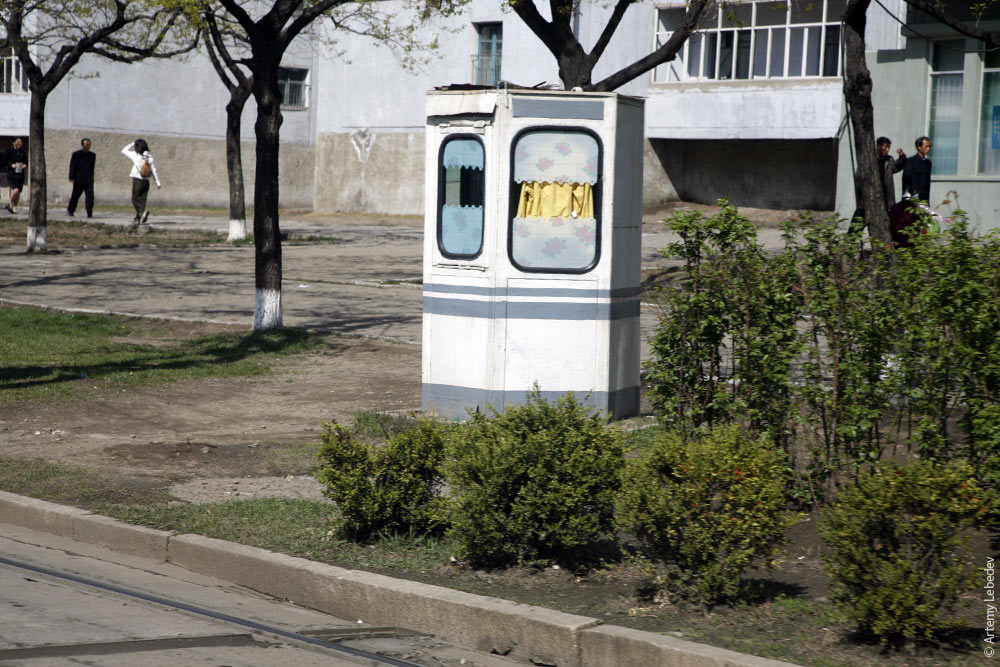 There are blue signs with a pedestrian symbol to warn drivers about upcoming crosswalks, preceded by additional yellow signs to warn them about the blue signs. 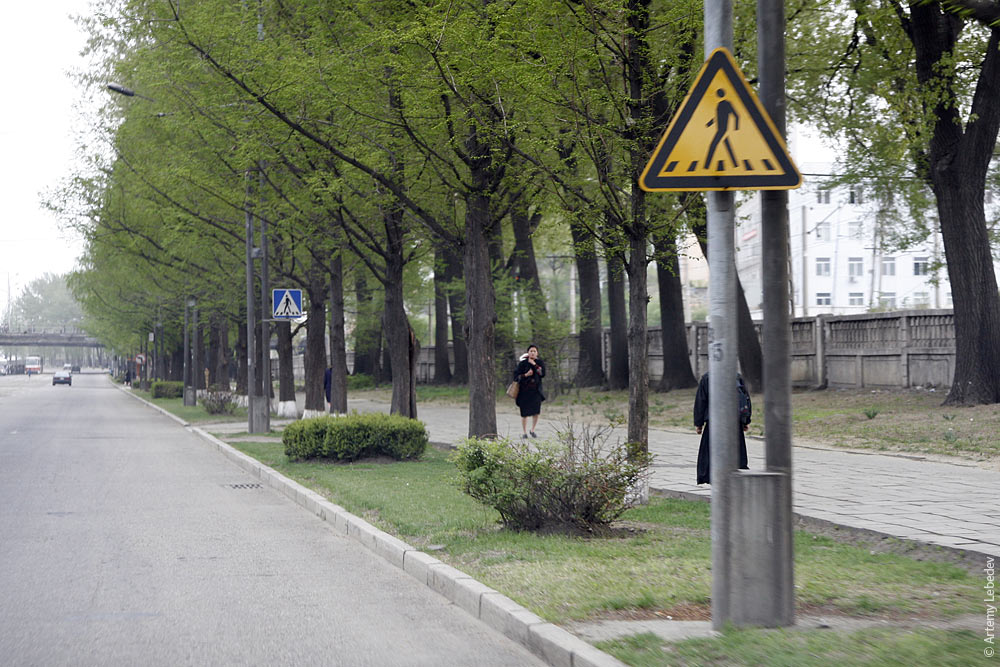 And yet drivers never, ever stop for pedestrians. Whenever they approach a pedestrian crossing, they begin to honk vehemently, scattering the crowd like a herd of cows. The guide was unable to explain this behavior to me. She doesn’t know how to explain that people lack any reflexes associated with reacting to the sound of a motor. And doesn’t know that pedestrians can sometimes be given the right of way. In the cities, pedestrians are forced to stay on the paths and use crosswalks. But in rural areas, everyone walks right on the road, as if cars didn’t exist here at all: 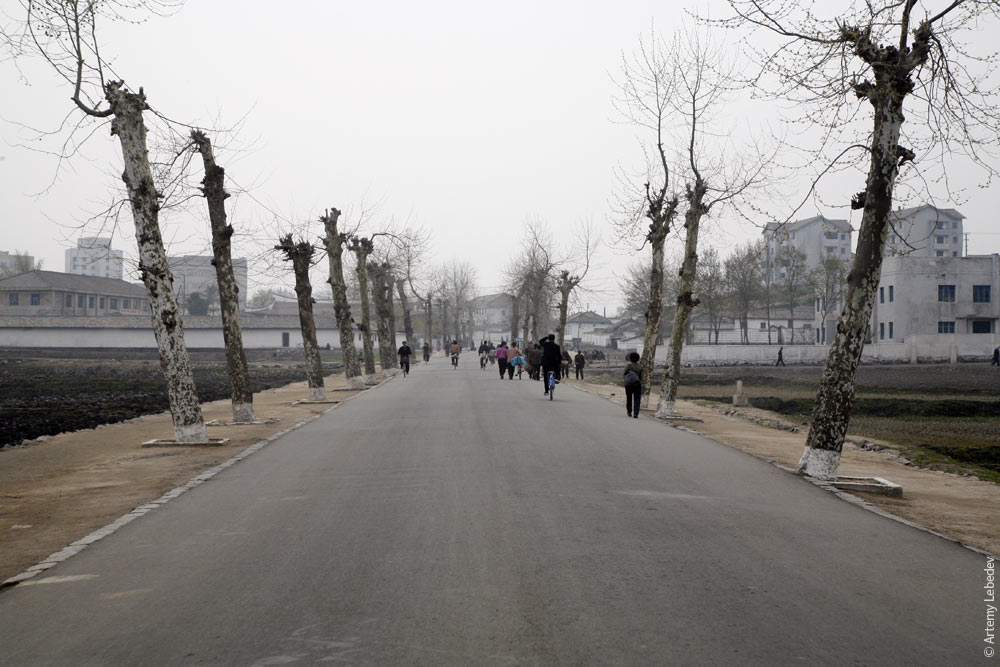 The drivers, in turn, lack the habit of checking their rearview mirrors—there’s usually no one there. So whenever one car wants to pass another, it has to blast its horn—otherwise the driver ahead won’t notice anything (to be fair, it’s exactly the same in China). The extremely small number of cars has made it possible for Pyongyang to realize the penultimate dream of city planners: trams that run along the sidewalk instead of the middle of the road. Since no one parks along the curb, the tram can run unimpeded. 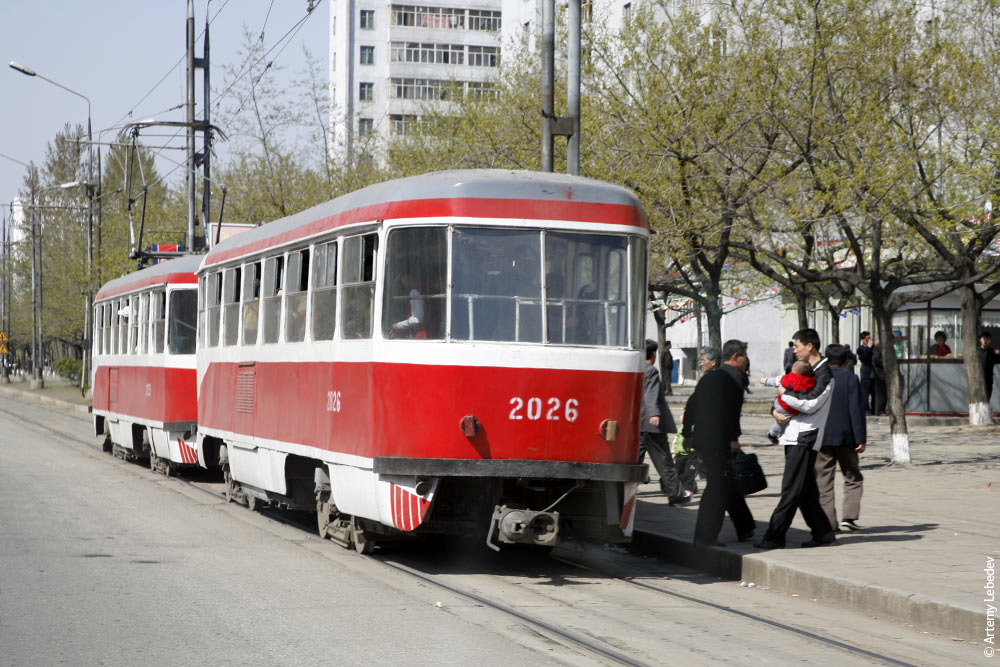 Interchanges are sometimes found in the most unexpected places. This one, for instance, is situated in the middle of an empty field (although it does pass over a railroad): 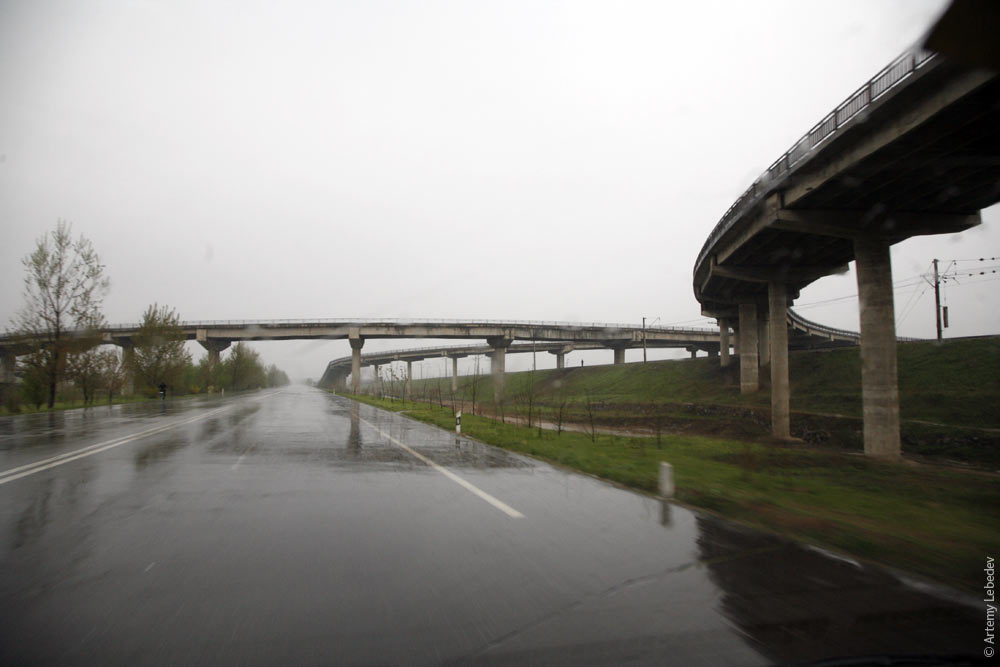 The only gas station sign I saw was next to my hotel in Pyongyang. And in the city of Wonsan, the driver actually stopped to get some gas. The station was located behind a completely nondescript fence. Looking from the road, you’d never even guess it was there. All passengers have to get out of the car before it drives into the station. Here I finally understood why some gas stations back home have signs that say “passengers must disembark” (see the story about Perm). In North Korea, must means must. There are sculptural compositions along the roads encouraging safe driving: 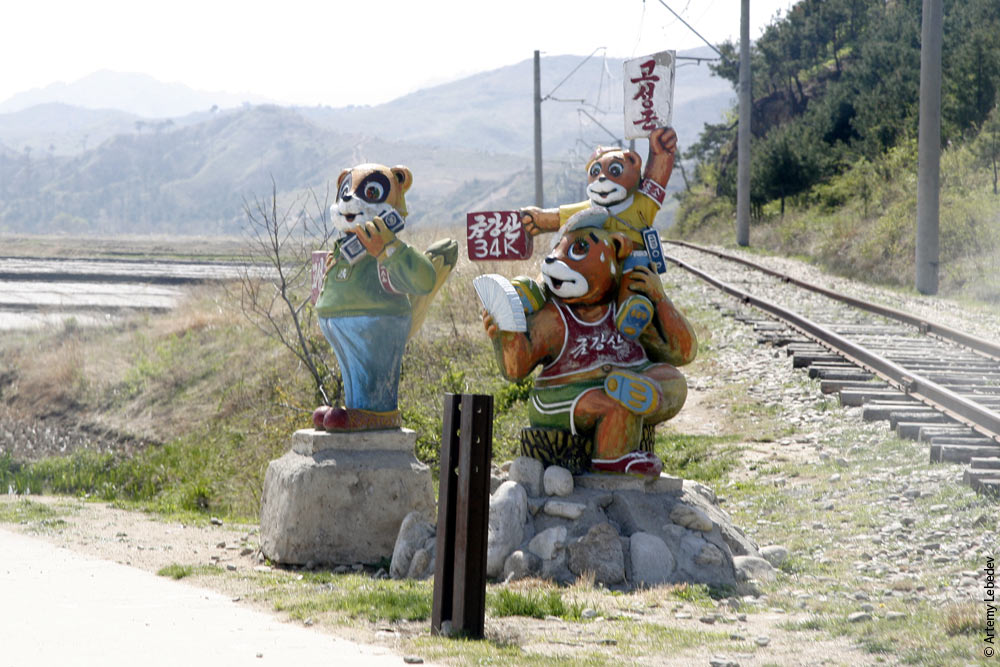 A bus stop. 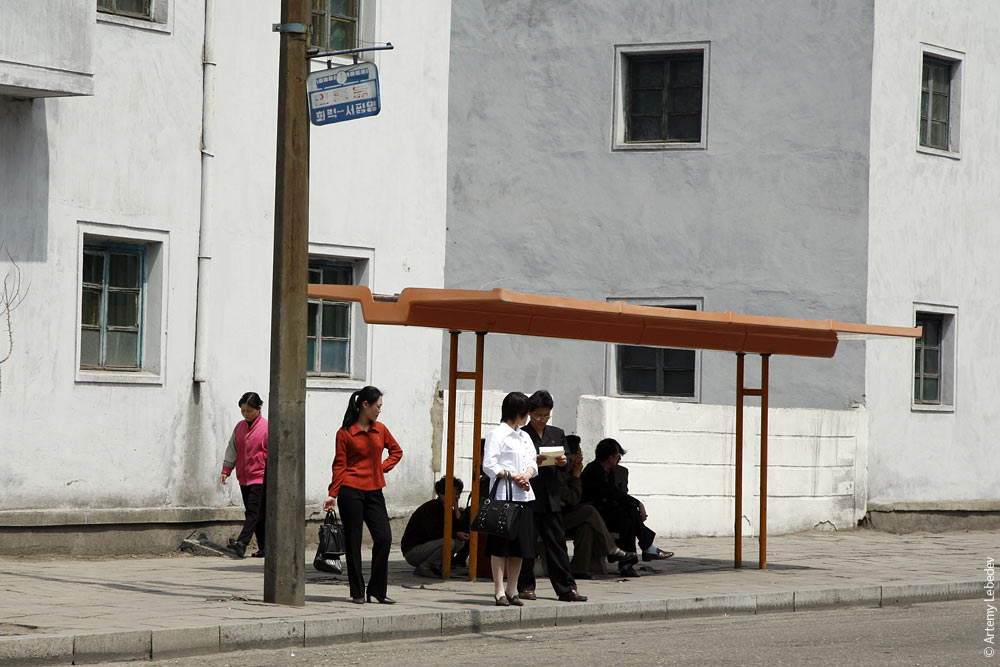 Twice a day, people whose home or work is more than a half-hour walk away queue up at the stops (the rest simply walk). 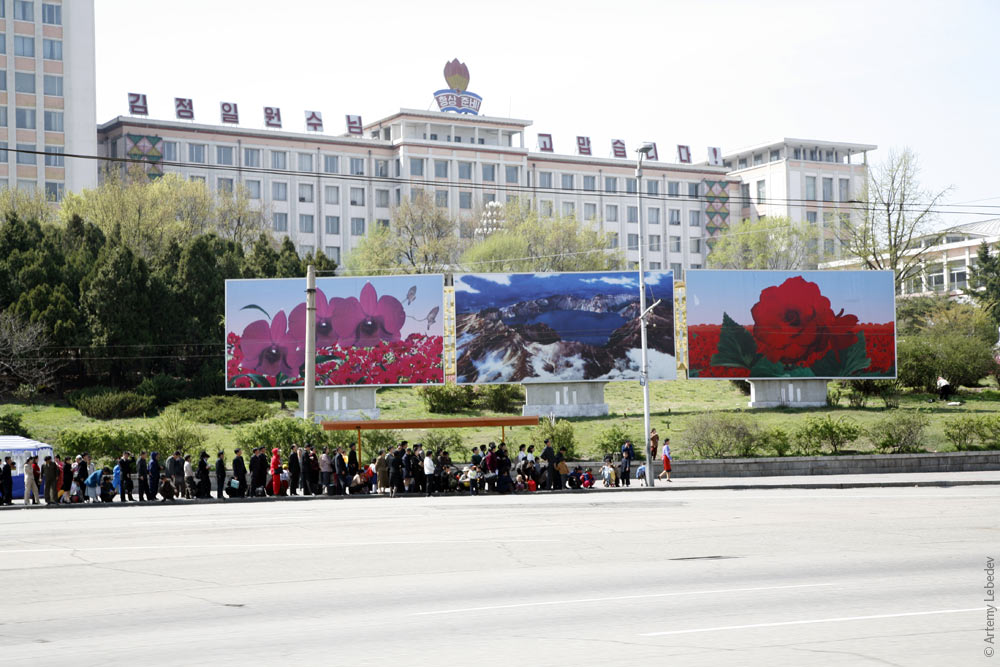 There’s no such thing as freedom of travel for vehicles and people within North Korea—every person is tied to their city of residence. To travel to another location, you have to obtain a special permit. This is why there are checkpoints on all the roads. The checkpoints are equipped with rolling gates. My driver would begin to honk and flash his headlights as we approached to get the soldier to roll back the gate. It seems they flash their lights at checkpoints when there’s a foreigner in the car, to avoid embarrassing the guest with formal inspection procedures. 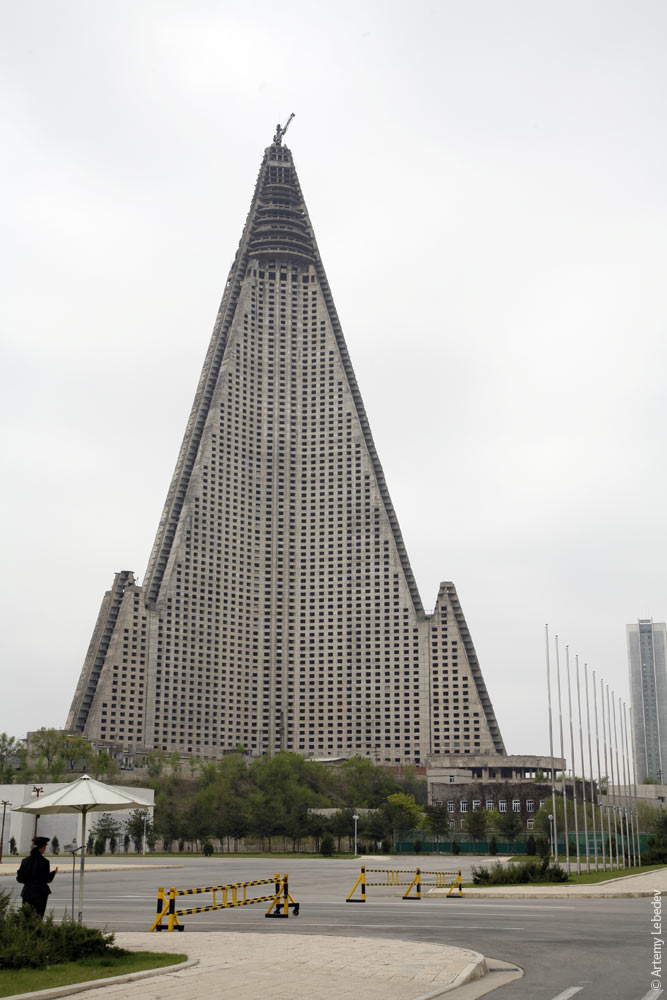 The city has some traffic lights, but they don’t work. 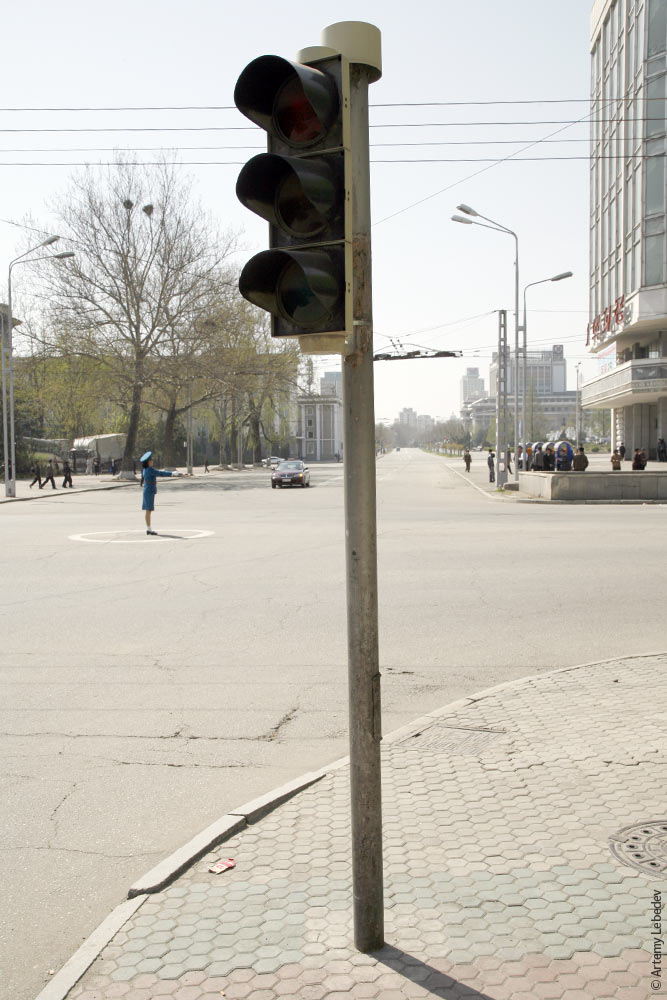 The only functioning traffic light is located across from the entrance to Kim Il-sung’s mausoleum. Everywhere else, the sparse car traffic is handled by female (in the capital) and male (in other cities) traffic controllers. 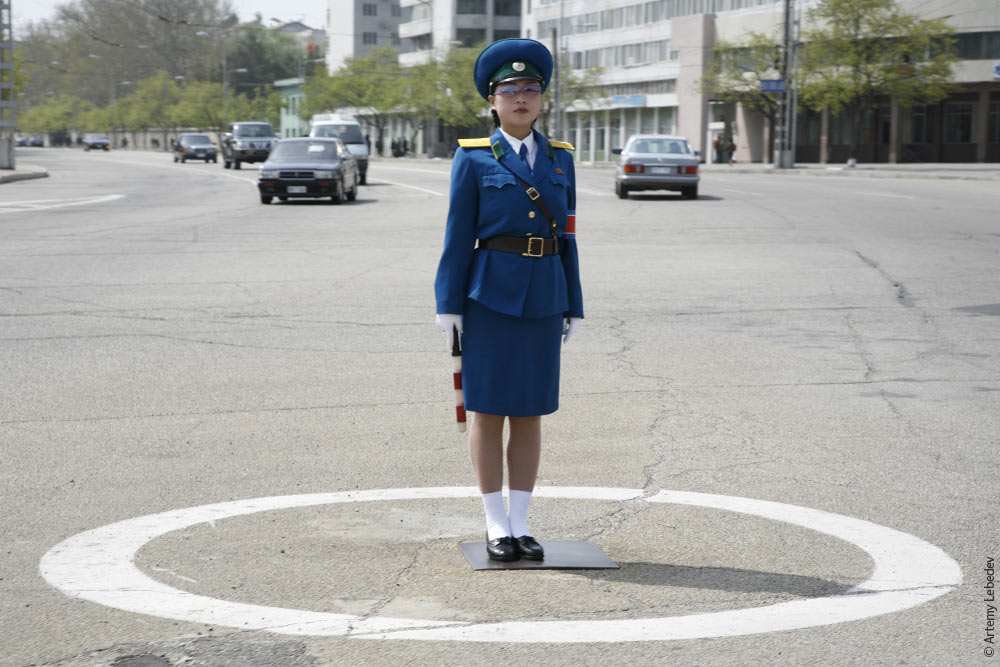 Traffic signs demonstrate what the cars look like.  And they’re not lying. 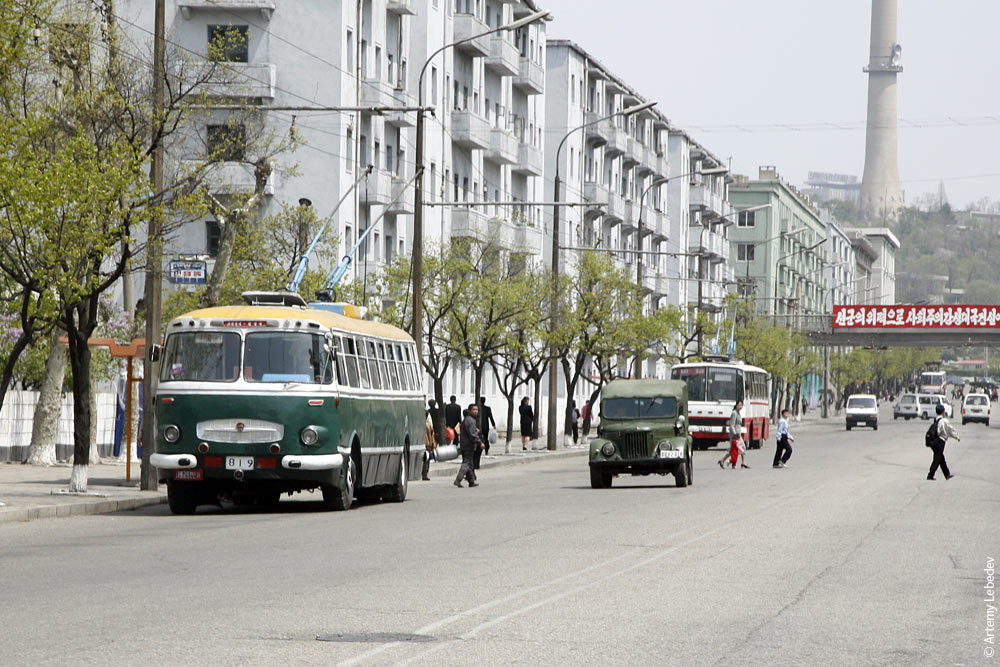 With the exception of Pyongyang, the trucks used here run on wood gas generators, i.e. on firewood. These trucks move slowly, but give off as much smoke as a steam locomotive. Of course, they constantly break down, everyone in the back gets out for a smoke, the driver digs under the hood. You’re really not allowed to photograph this, I even had to delete this photo while my guide was watching: 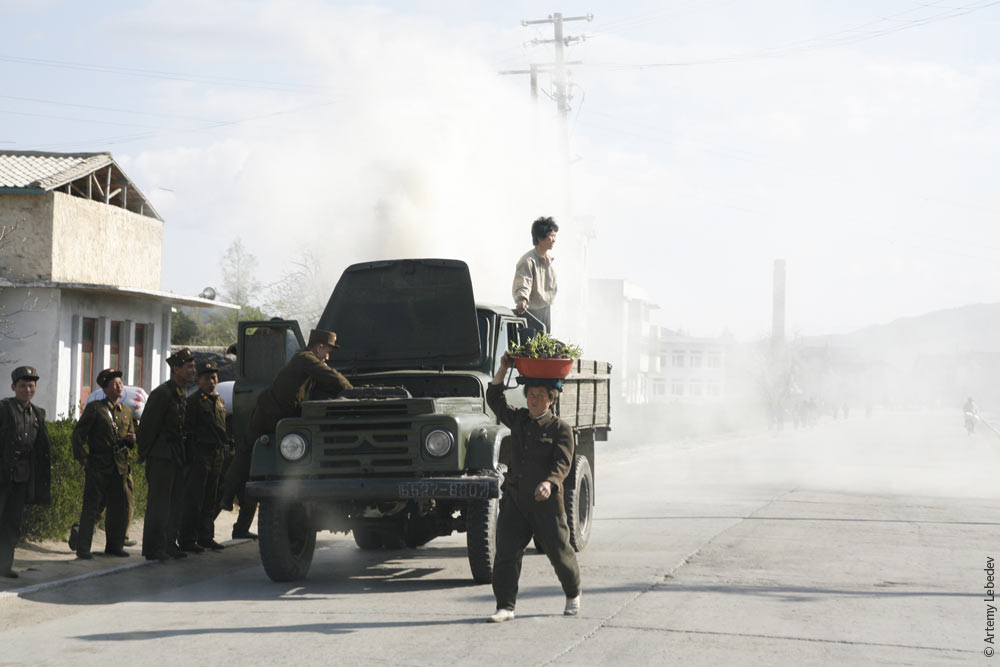 Tractors are rare. And they all look rather crudely made. 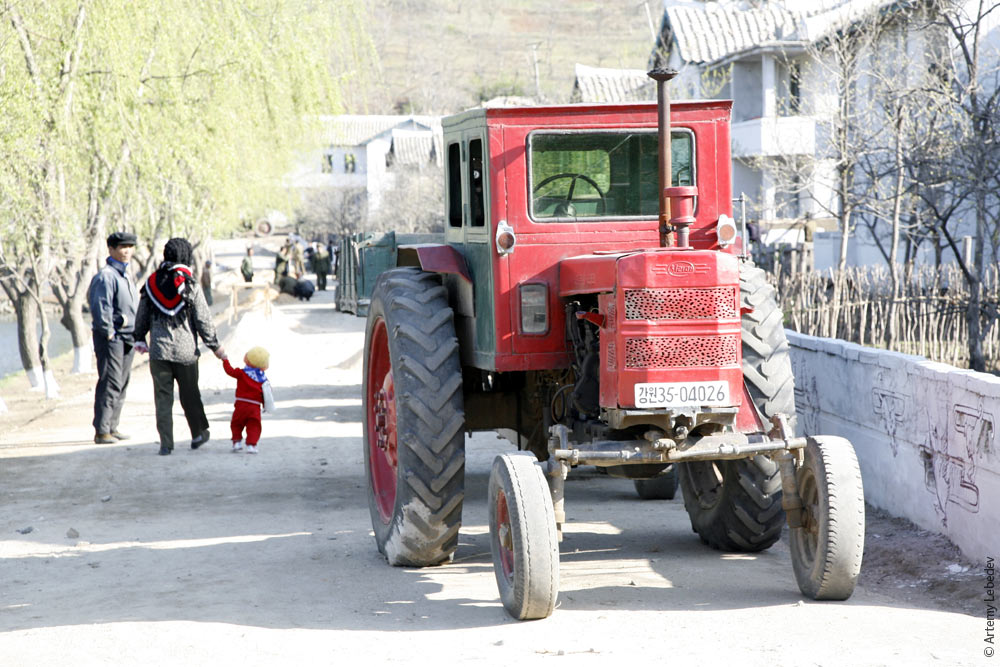 The car fleet includes some Japanese and South Korean models. But what really jumps out is the number of Mercedes-Benzes, which are known solely as Benzes here (an Asian tradition). The Benz is the car of choice for South Korean leaders. Kim Il-sung’s mausoleum, in addition to the mummy itself, also contains an SEL 500 parked for all eternity on some sort of porcelain jack stands. This also explains the stamps with a picture of a Benz issued by the North Korean postal service. 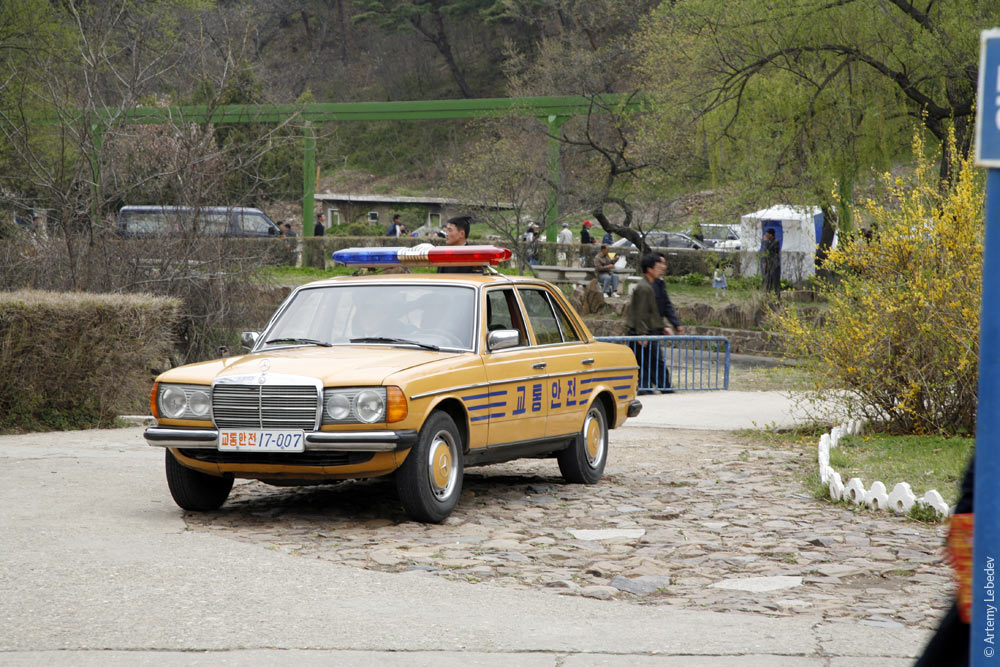 The monument commemorating the 50th anniversary of the Party’s founding consists of three hands holding a hammer, sickle, and brush, positioned in a circle. If you stand in the center and look up, you’ll see the same familiar logo. 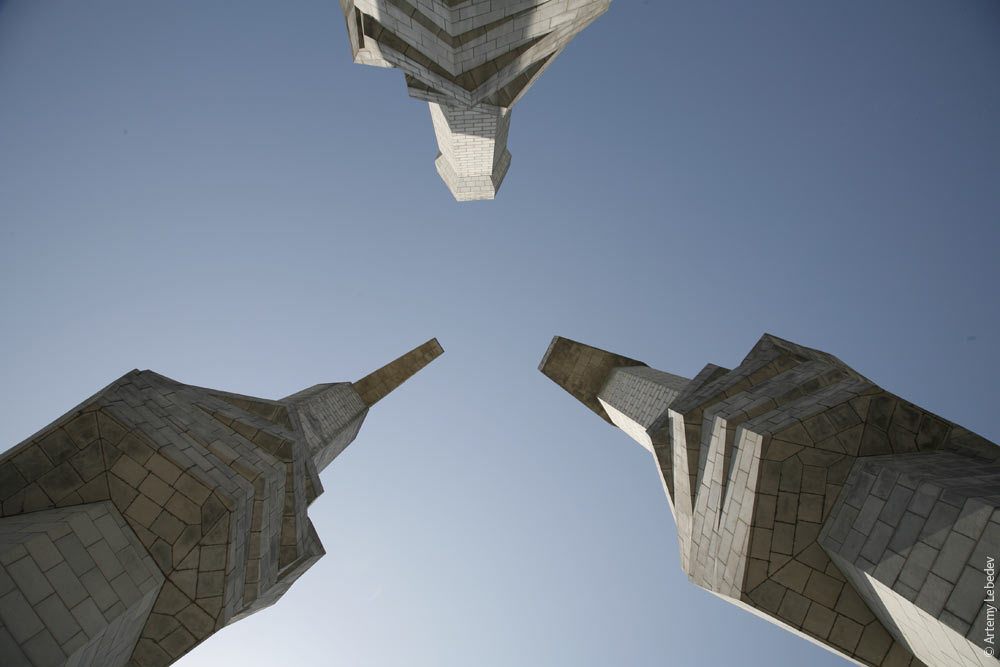 |